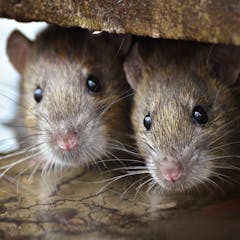
Articles on Disease
Displaying 1 - 20 of 209 articles

In the majority of cases, medications help patients. But even when treatment of individual illnesses is effective, treatment as a whole can become problematic.

H5N1 is the latest evidence that climate change is altering how viruses spread and evolve. It is essential that global public health officials take these dynamics into account.

In 2022 the top five conditions involved in deaths in Australia were coronary heart disease, dementia, high blood pressure, cerebrovascular disease (such as a stroke) and diabetes.

How diseases will change as Earth overheats.

Human factors − such as how people produce food and how they organize themselves and live together − influence disease outbreaks.

R intestinalis is one of the gut’s primary producers of butyrate – a source of energy for many of the gut’s cells.

People often think of leprosy as a bygone disease, relevant primarily in biblical times. But in fact, it is still present in more than 120 countries, and the US is seeing an uptick in cases.

Back pain is common. One in thirteen people have it right now and worldwide a staggering 619 million people will have it this year. Chronic pain, of which back pain is the most common, is the world’s most…

The science of smell is an exciting area of research.

Racial threats and slights take a toll on health, but the continual invalidation and questioning of whether those so-called microaggressions exist has an even more insidious effect, research shows.

Studies show that health misinformation on social media has led to fewer people getting vaccinated and more lives lost to COVID-19 and other life-threatening diseases.

Rats are well known to cause problems for humans. But we need a new approach to our relationship with them.

High levels of diarrhea, scabies and respiratory infections have been reported as bombing campaign progresses – and children are the most vulnerable.

The Sahel region is grappling with an outbreak of the deadly mosquito-borne disease.

The intersection of infected livestock from endemic tapeworm regions and dogs scavenging for disposed animal by-products creates the perfect storm to infect vulnerable human populations.

Obesity is a disease that shares several characteristics with cancer, but does not get the same society-wide recognition of its disease status, so people with obesity are less likely to get treatment.

No matter how much we believe our knowledge and our technological capabilities have evolved, pandemics prove we are still at the mercy of the natural world.

People who developed diabetes, psychosis and congestive heart failure, in that order, experienced the largest reduction in life expectancy

Obesity is out and ‘adipose-based chronic disease’ is in, according to a recent paper. But a name change alone won’t fix entrenched stigma.

At least half of surveyed US adults experienced loneliness and social isolation.
